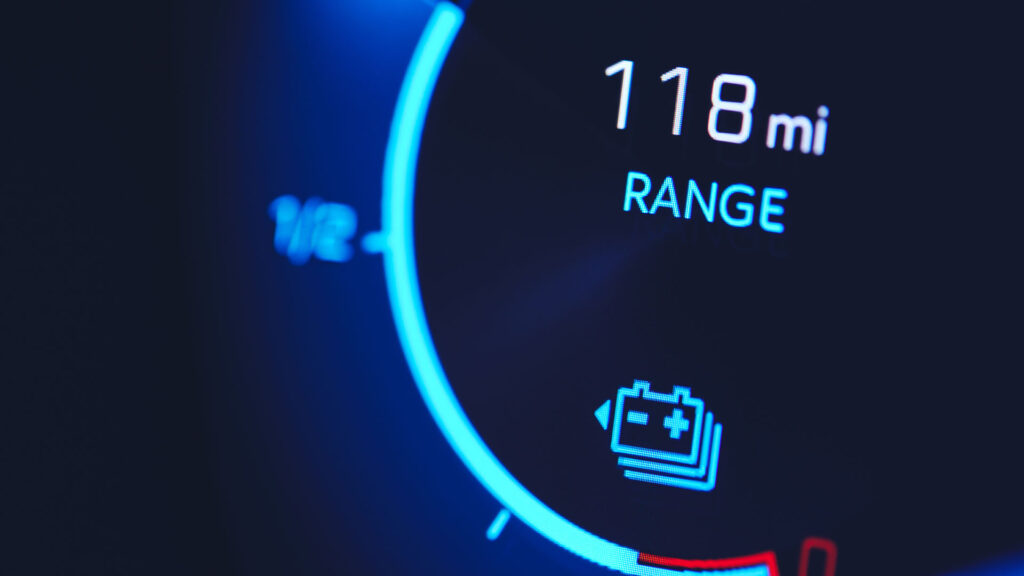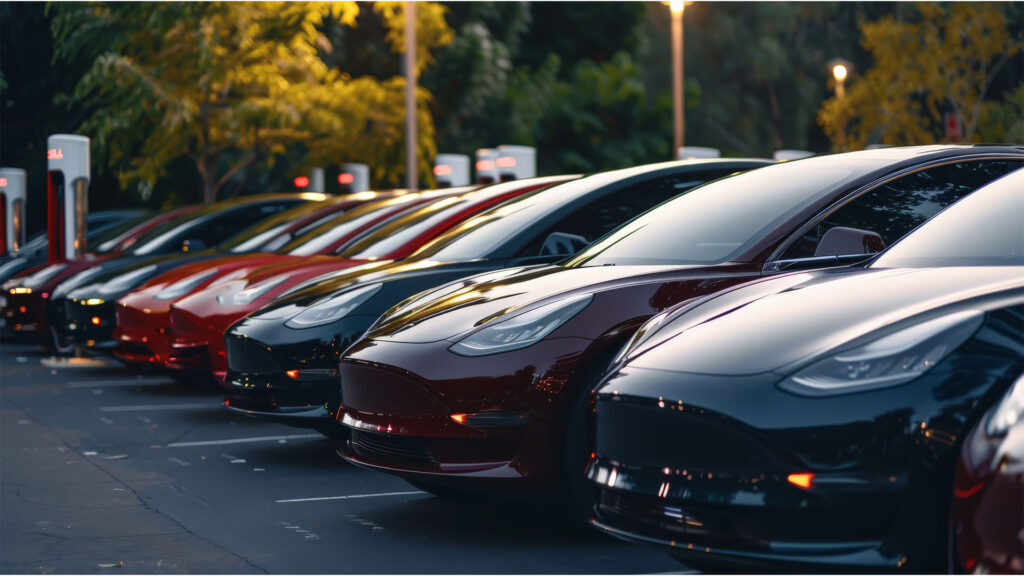How 48-Volt Systems are Changing the Game
The electric vehicle (EV) market is in overdrive. While traditional automobiles have relied on 12V electrical systems for decades, the latest generation of EVs is adopting a significant upgrade: 48V architecture.
This change is especially prevalent in fully battery-powered electric vehicles (BEVs), where the higher energy requirements of modern electronics and energy management systems call for a more capable electrical framework. The adoption of 48V systems in BEVs enhances overall efficiency, boosts performance, and improves power distribution, contributing to a more sustainable and satisfying driving experience.
Why the Shift to 48 Volts?
The 48V revolution isn’t just about raw power. While a significant boost in voltage might suggest brute force, the true strength of 48V systems lies in its capability to respond to the increasing complexity of BEVs.
As these vehicles grow more sophisticated, they need a more robust network to manage their increasingly complex high-tech components. The 48V system represents a major leap forward, offering four times the power of its predecessor.
Designed specifically for electric components, a 48V system isn’t merely a technical specification – it’s a key enabler of numerous improvements:
1. Enhanced efficiency: Higher voltage allows for the same power delivery with reduced current, minimizing energy losses due to resistance This improvement in energy efficiency translates to increased range, as less energy is wasted on non-propulsion systems.
2. Improved performance: A 48V system provides more power for features like HVAC and infotainment, allowing them to function better without draining the battery. It also enables advanced features like electric turbochargers. On top of that, 48V systems support active suspension, which measures pitch, roll and vertical movement of the car’s body. By constantly adjusting to driving conditions in real time, active suspension improves ride comfort and handling.
3. Reduced vehicle weight: Higher voltage systems can use thinner wiring, contributing to overall weight reduction. Reducing the weight of components like the wiring harness improves vehicle efficiency and range.
4. Preparedness for future technologies: The 48V architecture provides a solid foundation for upcoming advanced driver assistance systems (ADASs) and autonomous driving features.
Efficiency and Power Loss
The efficiency of an electrical system is directly influenced by the amount of power lost due to resistance in the wiring. In a 48V system, the lower current required to deliver a given amount of power compared to a 12V system results in significantly reduced heat and resistance losses.
For example, a 48V system delivering 3 kW of power carries only a quarter of the current needed by a 12V system. This leads to substantial energy savings and reduced heat generation. Consider that the higher voltage in a 48V system facilitates the management of regenerative braking systems and high-powered auxiliary components, further enhancing efficiency and minimizing power losses.
Applications of 48V Architecture in BEVs
The 48V architecture is a key innovation in BEVs, offering a more efficient and reliable solution for both primary and auxiliary systems. By shifting certain functions to a 48V network, BEVs can optimize energy use, improve vehicle performance, and enhance driving range. Below are several critical applications where 48V architecture is making a significant impact.

Auxiliary Systems
The adoption of 48V architecture extends beyond the primary propulsion system. Many auxiliary functions, such as air conditioning, heating, and power steering can also benefit from this technology. By shifting these systems to a 48V network, you can improve overall efficiency and reduce strain on the main high-voltage battery. For instance, HVAC systems, which are particularly energy-intensive, can operate more effectively with 48V power, conserving battery capacity and extending the vehicle’s driving range.
ADASs
Examples include adaptive cruise control, lane-keeping assist, and autonomous parking. These demand significant electrical power to operate radar sensors, cameras, and sophisticated processing units. By integrating these systems with 48V architecture, BEVs can ensure reliable and consistent performance without compromising other vehicle functions. The increased power capacity provided by a 48V network allows ADAS features to operate effectively, enhancing safety and convenience for drivers.
Braking and Regenerative Systems
Regenerative braking is a critical function in BEVs, enabling energy recovery during deceleration, which is then fed back into the battery. Higher voltage levels are essential for these systems, as they must manage substantial power flows. A 48V electrical system is perfect for efficiently controlling the energy transfer and storage involved in regenerative braking.
This is critical, as BEV braking systems are becoming increasingly electrified, with electronic actuation replacing traditional mechanical linkages to boost performance. The 48V architecture offers a stable power supply for electric braking, enhancing both safety and responsiveness.
Thermal Management Systems
Effective temperature control of the battery and power electronics is essential for maintaining performance and extending the lifespan of BEVs. Thermal management systems, which use pumps, fans, and compressors, can consume significant amounts of energy. But 48V architecture increases the efficiency of these components, enabling more effective thermal regulation while minimizing the impact on the vehicle’s range and overall performance.
Enhanced Fuel Efficiency and Reduced Emissions
One of the biggest perks of 48V systems is how they boost fuel efficiency and cut down on emissions. These systems also support hybridization, which means they help recover and use energy more effectively. Take braking, for example: the system can capture the energy produced and store it in a small battery. This stored energy can then power the vehicle or give the internal combustion engine (ICE) a helping hand, leading to lower fuel consumption and fewer emissions.
Versatility and Scalability
The versatility of 48V systems makes them a perfect fit for all types of vehicles, from compact cars to large SUVs and commercial vehicles. This scalability means the advantages of 48V technology can make a big impact by reaching every corner of the automotive market, encouraging widespread adoption.
Challenges and Considerations
Cost
While 48V architecture provides numerous benefits, the transition from 12V to 48V systems increases complexity and costs. New components, such as power converters, wiring harnesses, and control systems, must be integrated into the vehicle. These costs may be offset by the long-term efficiency gains, but they represent an upfront investment for automakers and consumers.
Compatibility with Existing Infrastructure
BEVs with 48V architecture require components and charging systems compatible with both 48V and higher-voltage battery packs. This means careful coordination between low- and high-voltage systems is necessary, as well as advanced power management strategies to ensure smooth operation. Automakers must ensure that legacy 12V components – which still may be present in early generations of BEVs – can be seamlessly integrated or replaced.
Power Conversion Complexities
The use of dual-voltage systems (high-voltage for propulsion and 48V for auxiliaries) introduces the need for DC-DC converters to manage the power flow between these systems. These converters add complexity to the vehicle’s design and can be a potential point of failure if not properly engineered.
Future Trends in 48V Systems
As BEVs evolve, the use of 48V architecture is likely to expand. Future innovations could include even more electrification of vehicle systems, such as steering mechanisms, autonomous driving technologies, and higher-performance onboard computing systems. The increasing integration of solar panels and energy harvesting technologies in BEVs may also benefit from a 48V architecture, allowing more efficient storage and use of captured energy for non-propulsion systems.

Conclusion
The emergence of 48V architecture in EVs is a turning point for meeting environmental regulations and consumer demands. By enhancing fuel efficiency, performance, and versatility, 48V systems pave the way for a future filled with cleaner, more exciting driving experiences. While there are challenges to overcome, such as cost and system complexity, the advantages of 48V systems make them an important part of the future of EV design. As BEVs continue to advance, 48V systems will play a key role in ensuring these vehicles are more efficient, comfortable, and capable of handling the increasing electrical demands of modern driving.
See inside Tesla’s groundbreaking 48-Volt Technology
Watch as Caresoft President Terry Woychowski reveals the inner workings of Tesla’s powerful 48V architecture. You’ll also witness a few more hidden surprises discovered. Don’t miss out – click here to see the video. If you have any questions, we invite you to contact us.
Disclaimer:
The content provided on this blog is for informational purposes only and should not be construed as professional advice. While we strive to ensure the accuracy of the information presented, Caresoft Global makes no warranties, either express or implied, about the completeness, reliability, or accuracy of the content on this blog. Some information may be outdated, obsolete, or inaccurate, and we strongly recommend that you independently verify any information before relying on it. Any action you take based on the information provided on this blog is strictly at your own risk. Caresoft Global will not be liable for any losses or damages in connection with the use of our blog. Links to third-party websites are provided for convenience and informational purposes only; they do not constitute an endorsement or approval by Caresoft Global of any products, services, or opinions of the corporation, organization, or individual.

